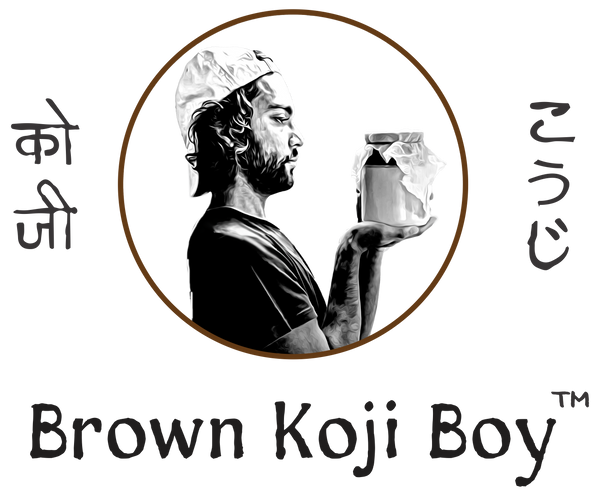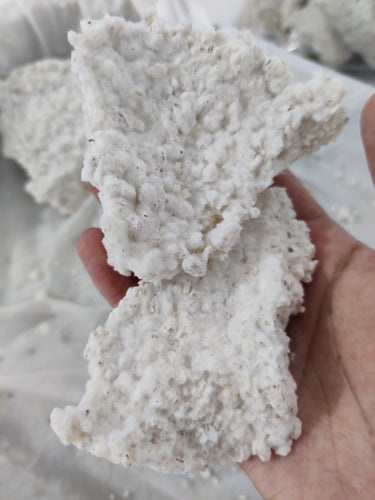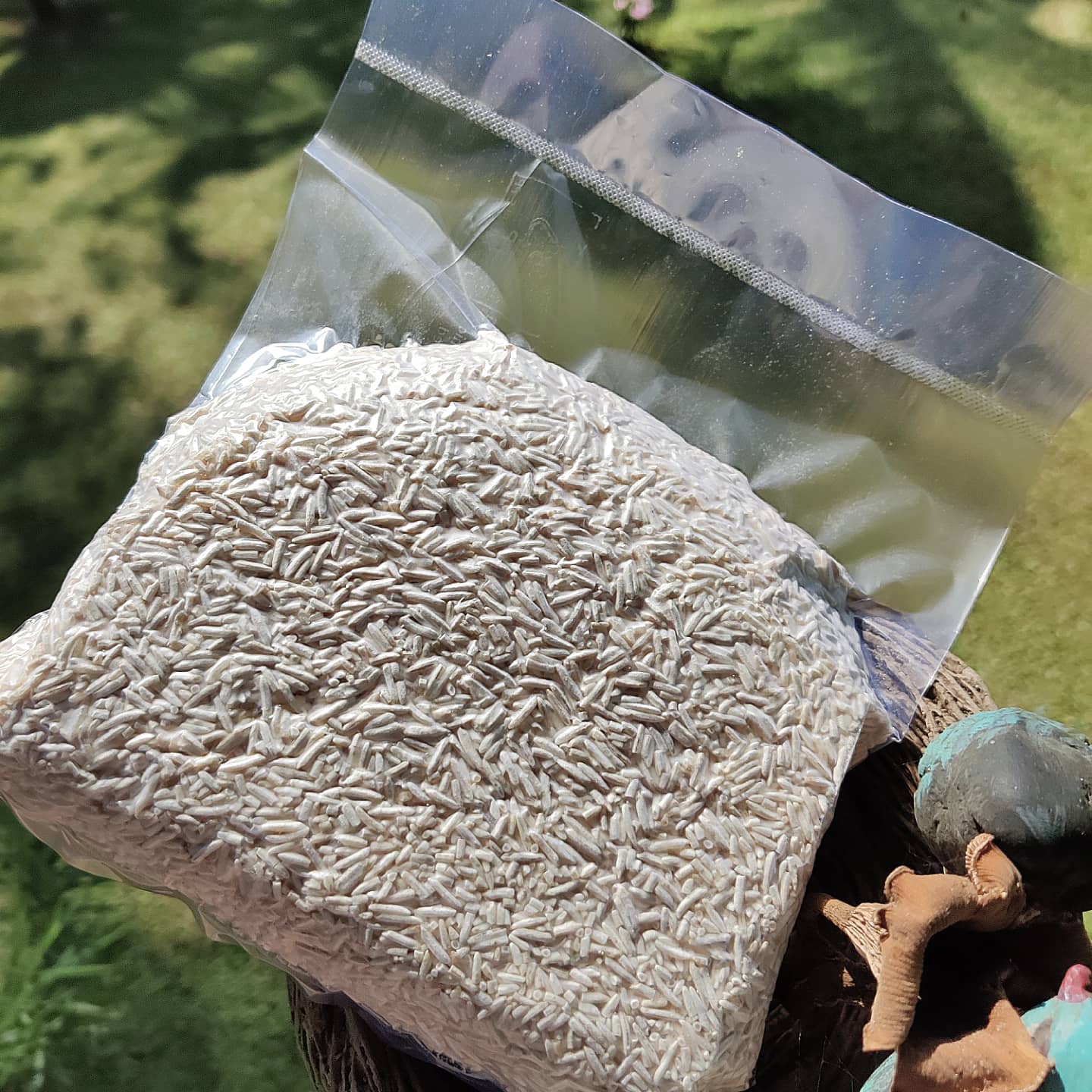Japan’s national mold, a filamentous fungus, more specifically Aspergillus Oryzae - is the star in the production of umami loaded seasoning & curing agents such as Soy Sauce, Miso, Tamari, Shio & Shoyu Koji as well as beverages like Amazake, Sake, Shochu and so on.
Similar to mushrooms, its life starts as a spore which sprouts hyphae, binding their roots to form a tight mycelial network on cooked grains & legumes that are left in warm & humid environments. Over the course of 48 hrs it feeds & digests nutrition from the substrate, forming a dense white mat - aka - 'Koji Cake' which has these amazing transformative properties to make all things fermented & delicious.
What are these transformative powers?
Koji produces a flight of enzymes that breaks down:
1. Amylaze - starch into simple sugar
2. Protease - proteins into amino acids (UMAMI)
3. Lipase - fats into fatty acids
Its presence in the culinary landscape, traditionally has been associated with koji being grown on rice or barley (miso, sake) and soybeans (soy sauce, tamari).
However modern chef's/fermenters/brewers today have been able to take this understanding and grow it on almost any substrate that contains starch or protein.
BOOK RECOMMENDATIONS:
- Koji Alchemy: Rediscovering the Magic of Mold-Based Fermentation by Jeremy Umansky & Rich Shih
- The Noma Guide to Fermentation by René Redzepi & David Zilber
- Miso, Tempeh, Natto & Other Tasty Ferments: A Step-by-Step Guide to Fermenting Grains and Beans by Kirsten K. Shockey & Christopher Shockey
- The Book of Miso by William Shurtleff and Akiko Aoyagi
- The Art of Fermentation: An In-Depth Exploration of Essential Concepts and Processes from around the World by Sandor Ellix Katz





